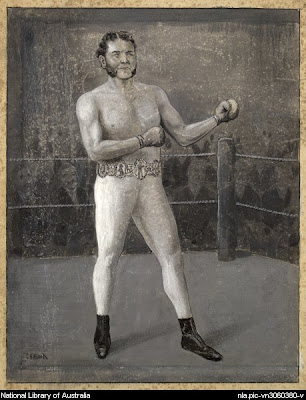How happy are you?
There are numerous similes to indicate how happy you feel. If you live "Down Under" (Australia or New Zealand), you might feel "as happy as Larry". In England it is more usual to claim that you are "as happy as a sandboy"; and in America you would probably assert that you are "as happy as a clam".
But who is Larry?
What exactly is a sandboy?
And why are marine molluscs supposed to be happy?
The earliest use of Happy as Larry appears to date back to about 1875 when New Zealand writer G. L. Meredith quoted: "We would be as happy as Larry if it were not for the rats". Who "Larry" was seems to be a matter of opinion but one source suggests it is the Australian boxer Larry Foley (1847 - 1917).
The English simile Happy as a Sandboy may conjure a picture of a child playing happily on a golden beach when on holiday. In fact it is something far less romantic. A sandboy was the person (the term "boy" in old English often referred to a man with a menial job) who spread the sand on the floor of a pub to soak up spills and saliva (later replaced by sawdust, hence "spit and sawdust"). But why were sandboys happy? Well, the answer may not be so difficult; it appears they were a carefree bunch who were often intoxicated!
There is an alternative explanation that goes back to the days when monks copied out their scripts when a dusting of sand was used as the equivalent of blotting paper. A sandboy was a monastic pupil who was excused other work in order to stand by with a ready supply of sand for the calligraphers in the nice, warm, comfortable scriptorium. Hence, they were "happy"!
The American preference for being as Happy as a Clam is more puzzling, for how can a marine invertebrate mollusc be described as "happy"? Because clams are popular sea-food ingredients (for example in clam chowder), they maybe considered to feel happier (if molluscs can express such emotion) at high tide when they cannot be collected. Hence "happy as a clam at high water" used by the Pennsylvania newspaper The Adams Sentinel, in August 1844: "Crispin was soon hammering and whistling away as happy as a clam at high water."
Apparently "As happy as a clam at high water," is a very common expression in those parts of the coast of New England where clams are found in abundance.
For picture internet sources, please click on the images










